Innovation Leader Profiles
This series highlights leaders who are making remarkable contributions, driving innovation, and making critical decisions in a rapidly evolving landscape to inspire and inform.
FEATURING
Phil Clark, Chief Technology Officer, Nouryon
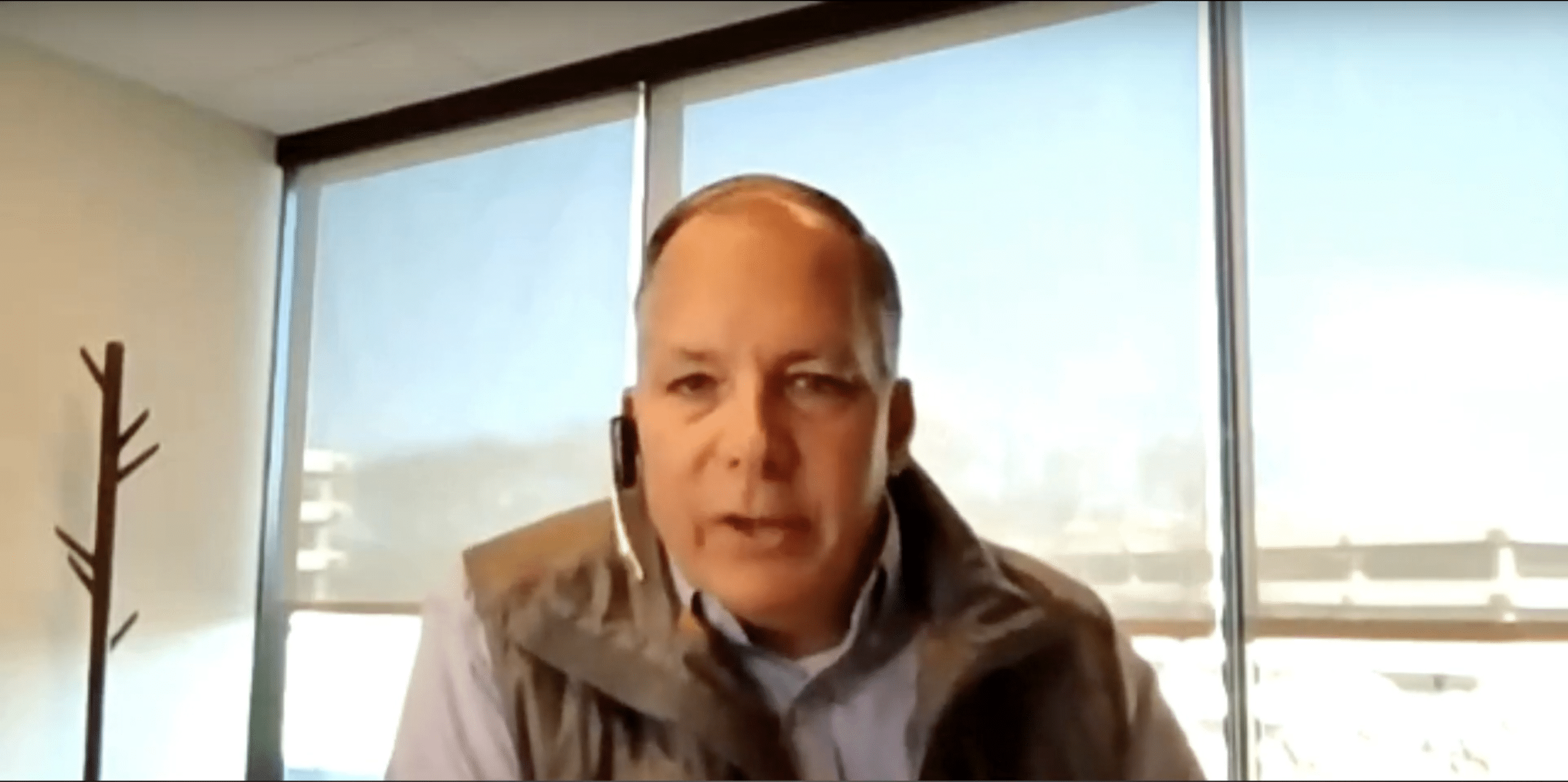
FULL INTERVIEW
Lux CEO, Marisa Kopec, sits down with Phil Clark to discuss everything from biosurfactants and machine learning to tools to manage and communicate change across large global teams. Their conversation is sure to inspire existing and aspiring leaders in the evolving field of innovation leadership.
INTERVIEW HIGHLIGHTS
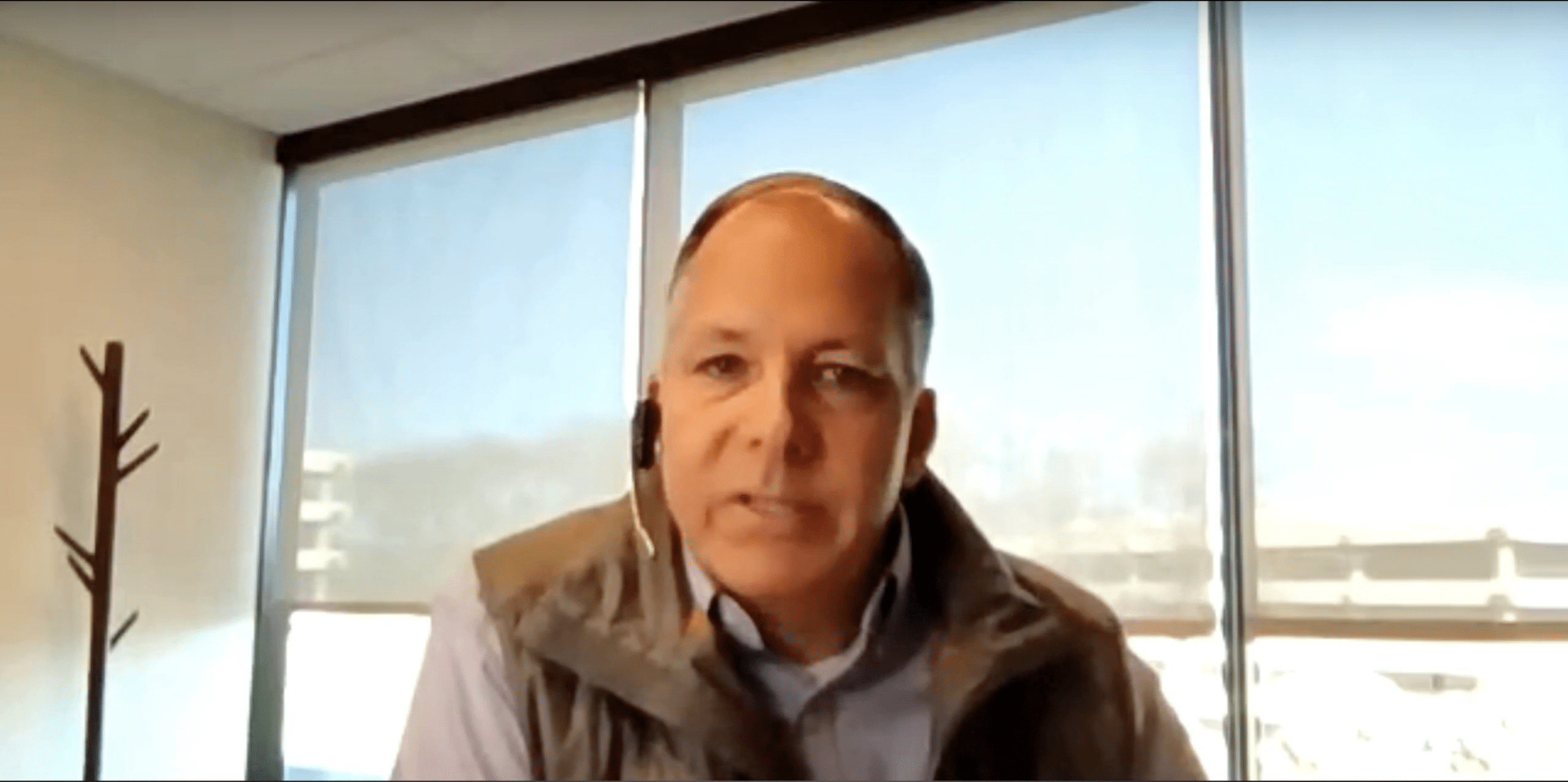
Emerging Trends
(3 minutes)
Share
https://luxresearchinc.com/resources/chemicals/innovation-leader-phil-clark/#emerging_trends
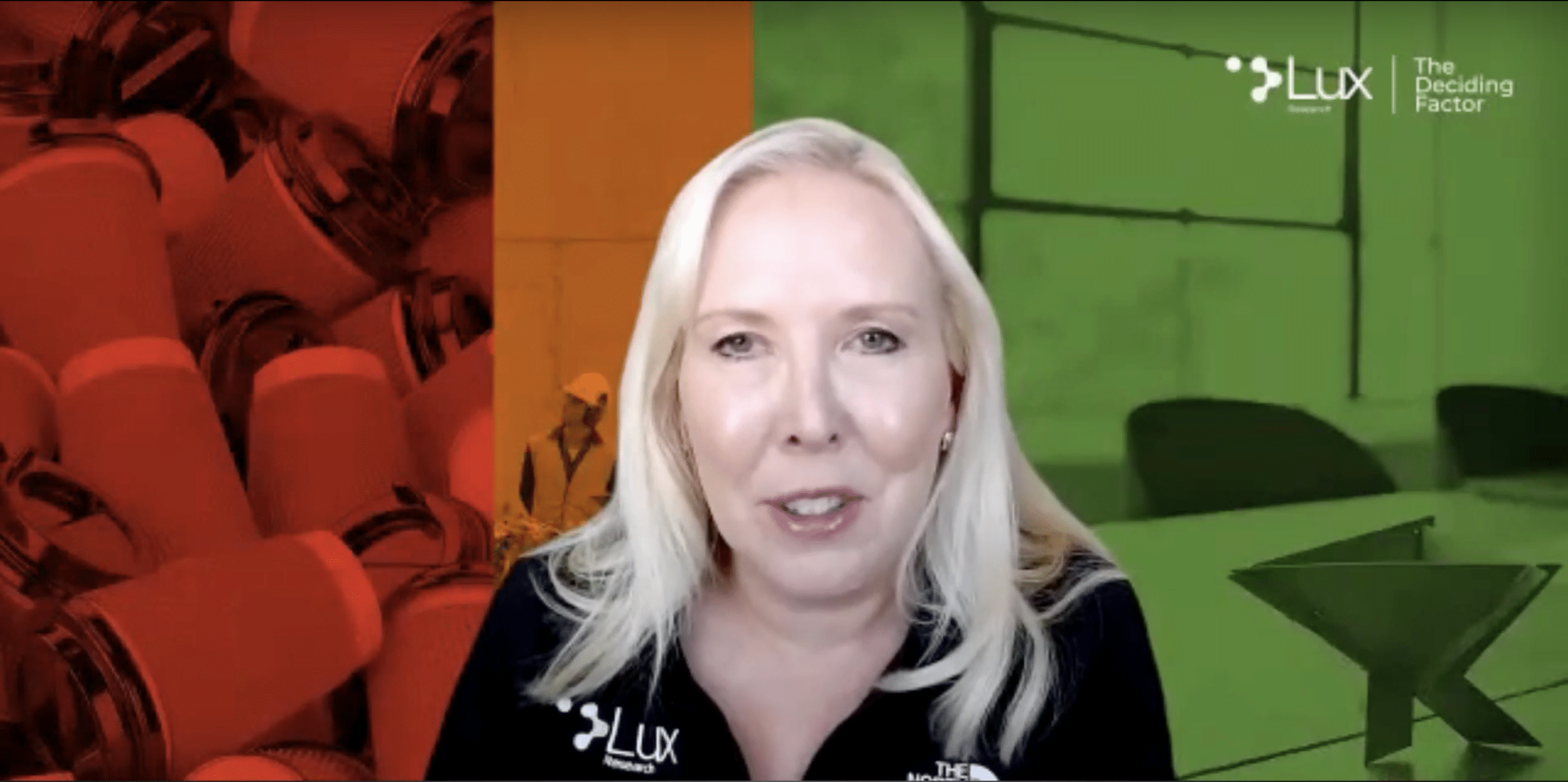
A Success Story: Machine Learning
(3 minutes)
Share
https://luxresearchinc.com/resources/chemicals/innovation-leader-phil-clark/#machine_learning
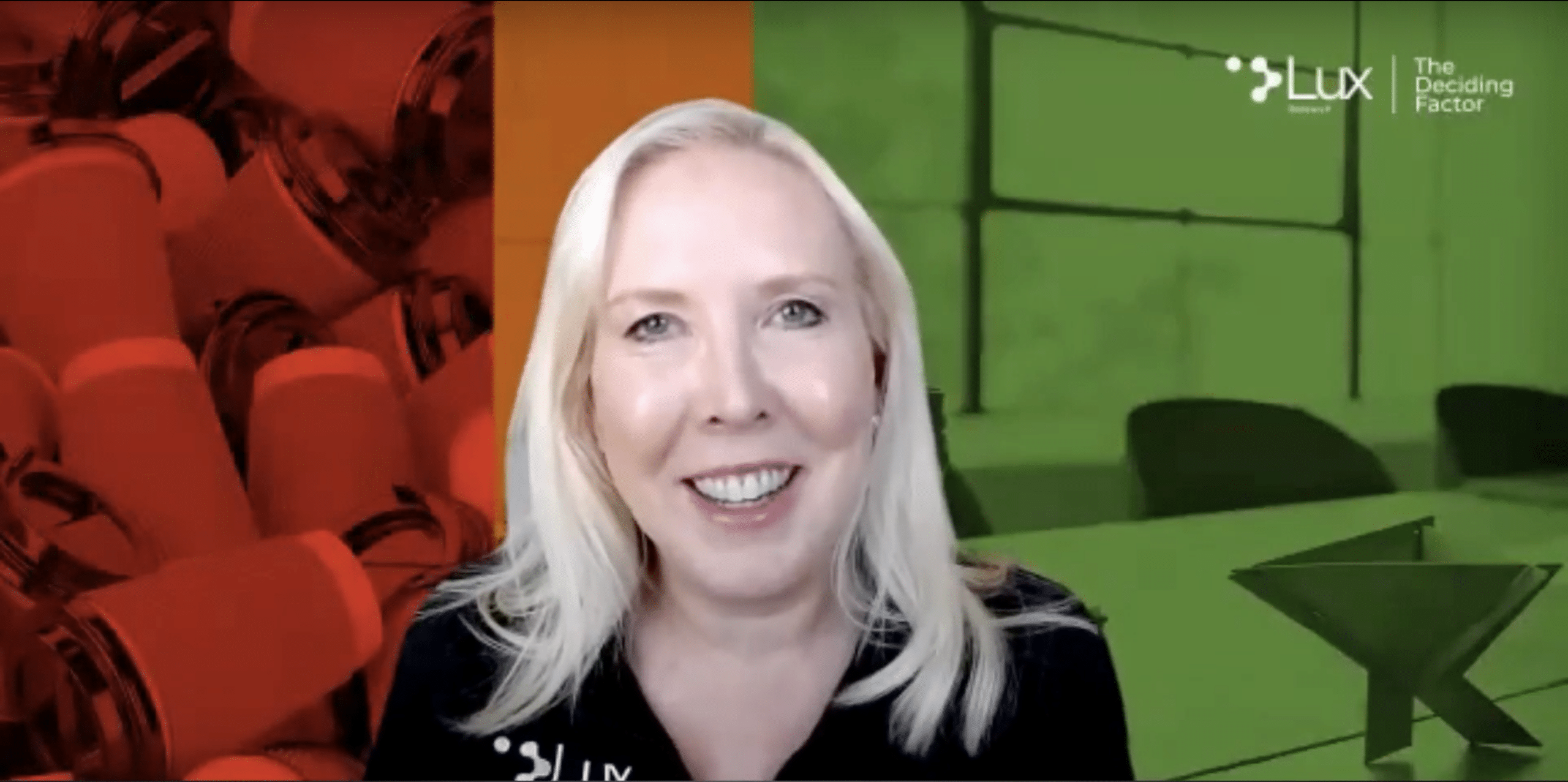
Driving Innovation Change
(6 minutes)
Share
https://luxresearchinc.com/resources/chemicals/innovation-leader-phil-clark/#innovation_change
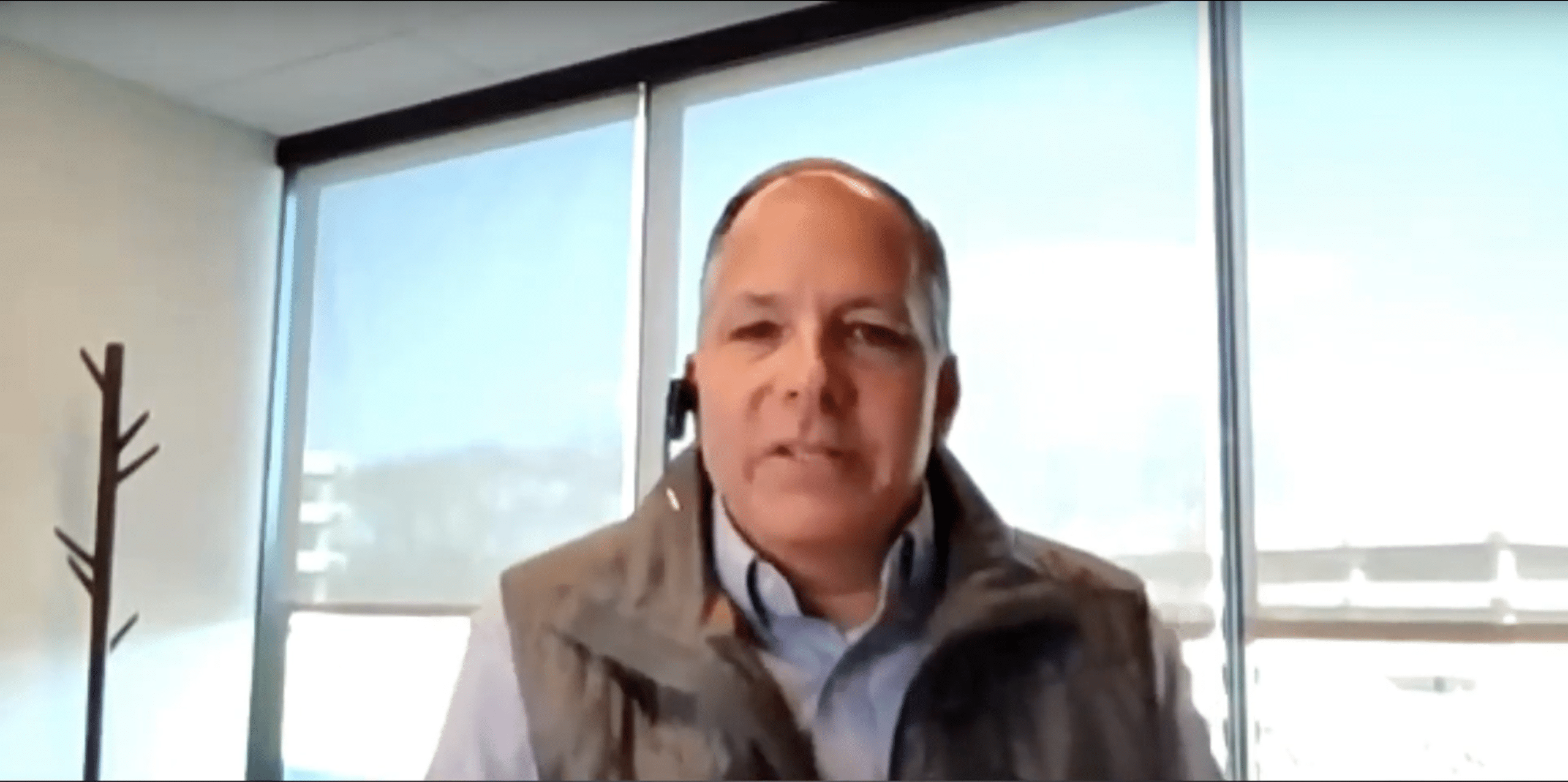
Leadership and Collaboration
(4 minutes)
Share
https://luxresearchinc.com/resources/chemicals/innovation-leader-phil-clark/#leadership_collaboration
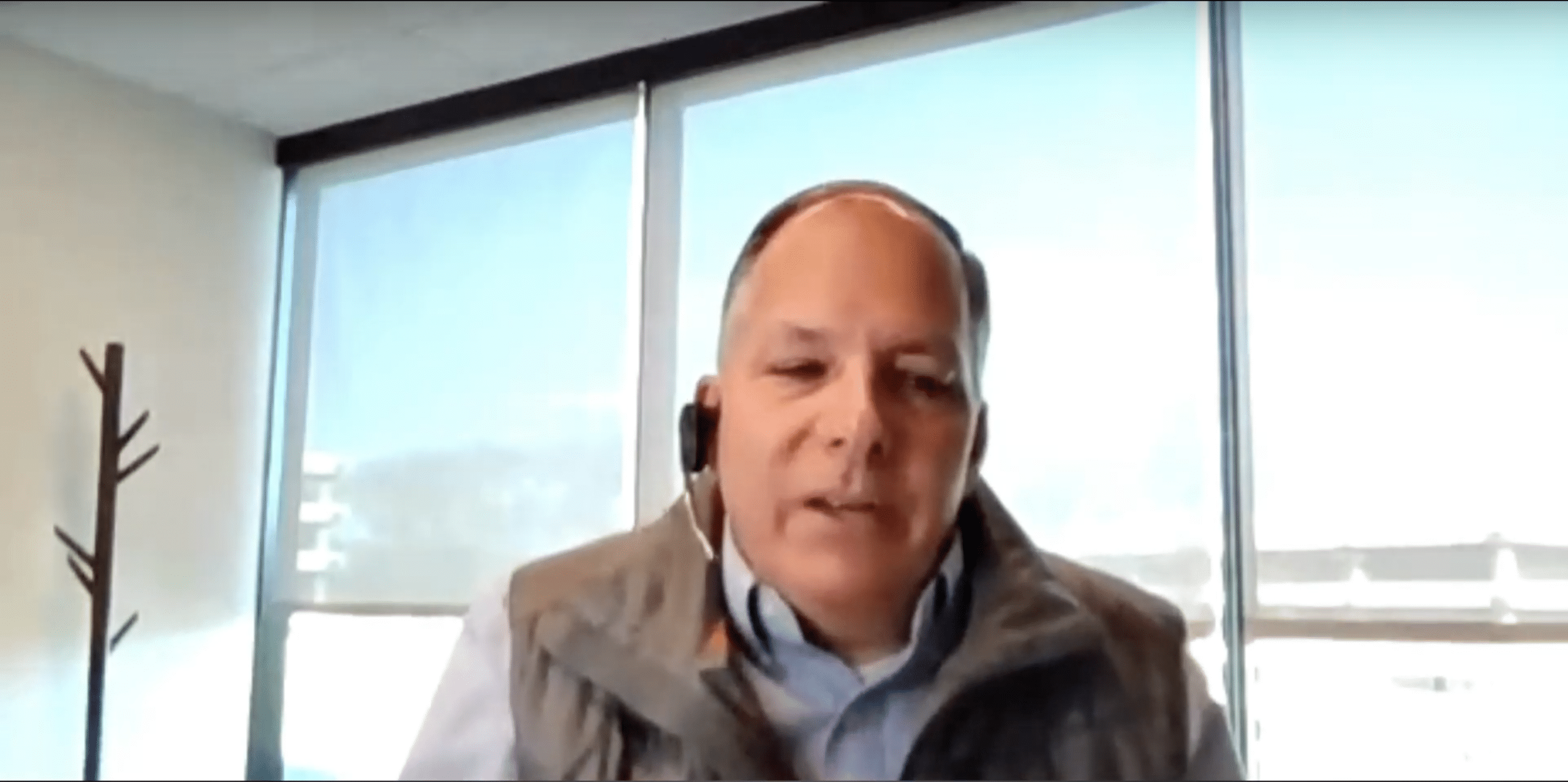
Critical Decision Making
(5 minutes)
Share
https://luxresearchinc.com/resources/chemicals/innovation-leader-phil-clark/#critical_decision
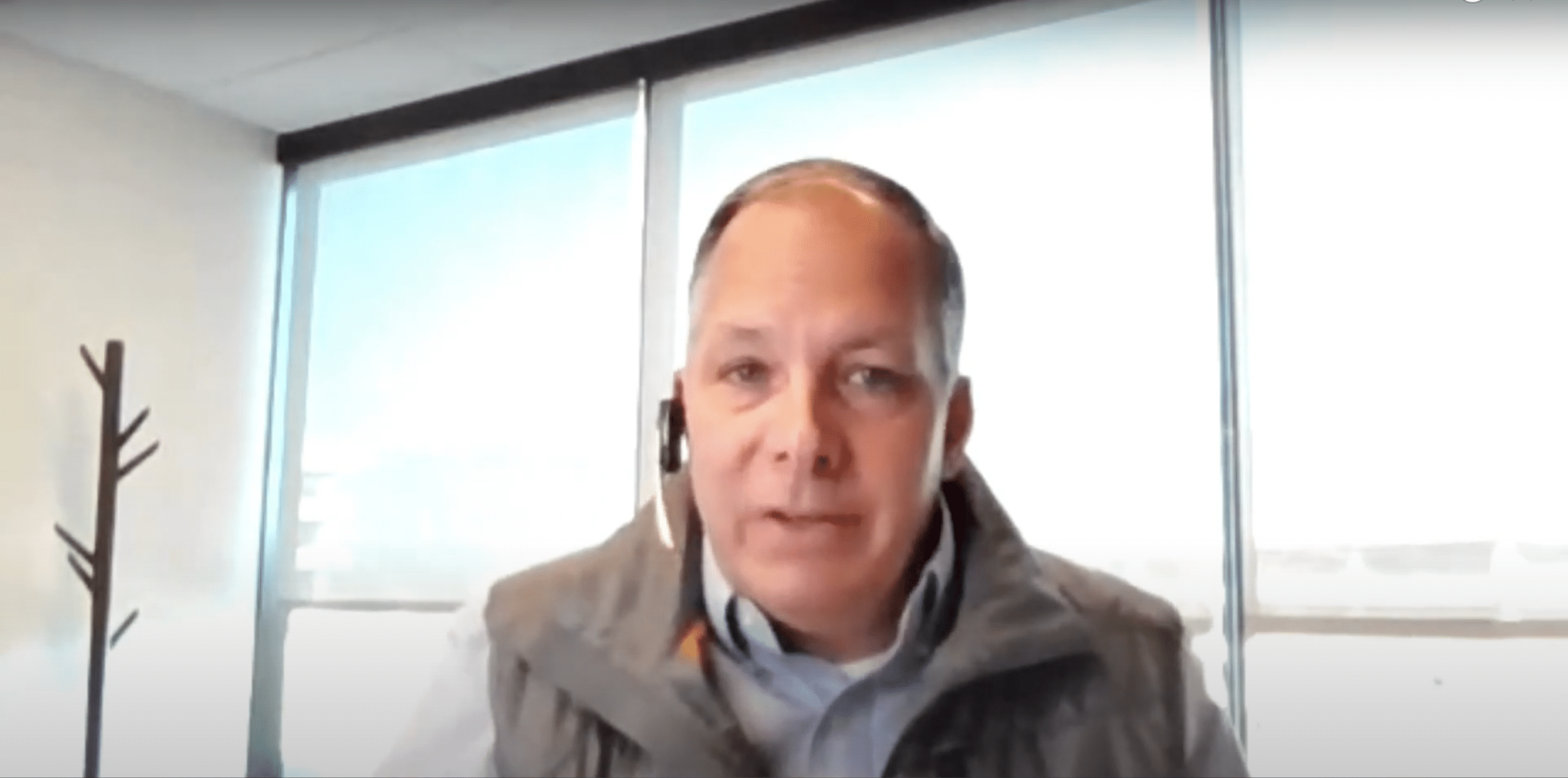
The Value of Lux
(5 minutes)
Share
https://luxresearchinc.com/resources/chemicals/innovation-leader-phil-clark/#value_lux
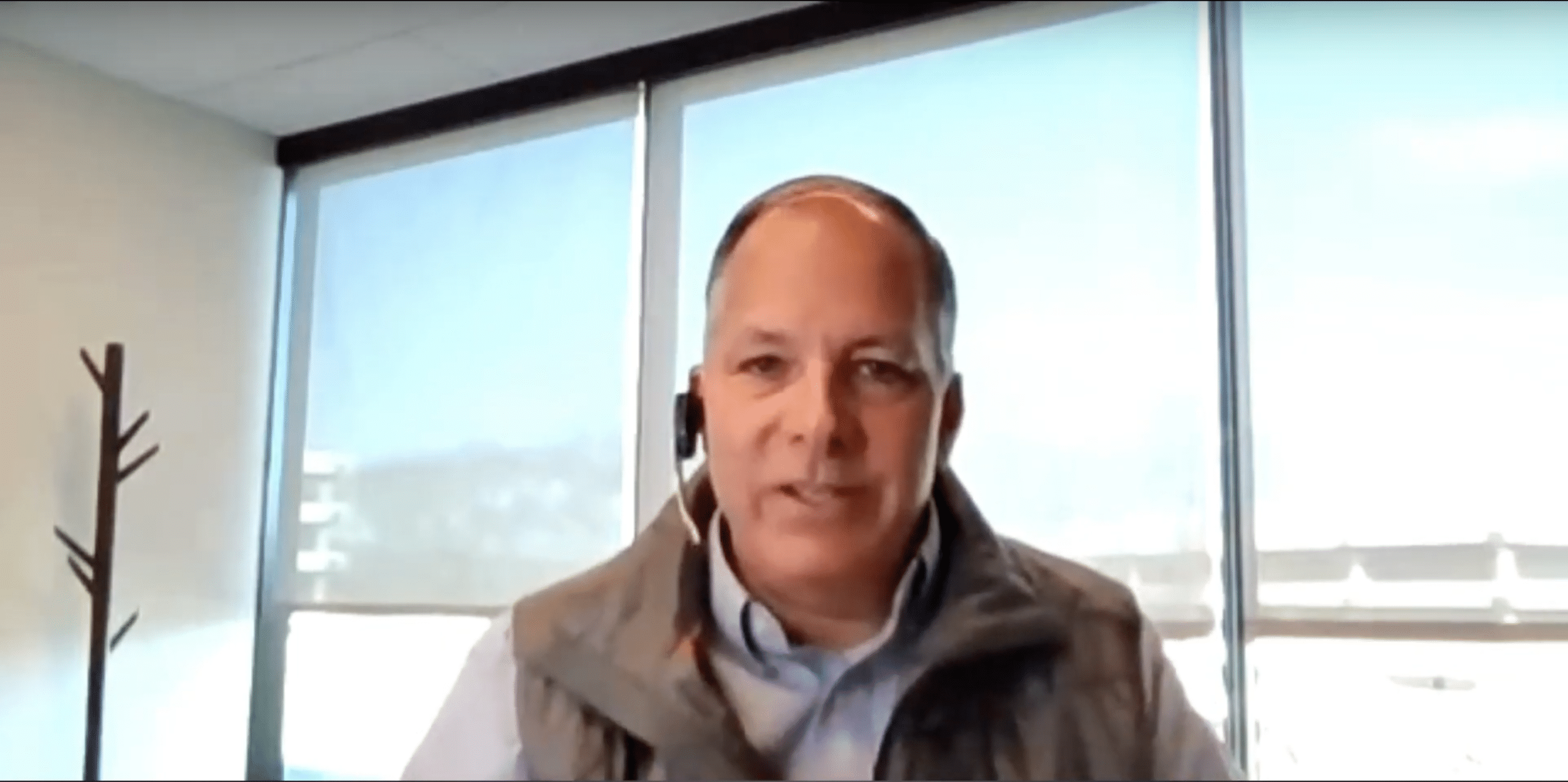
Building an External Network (3 min)
(3 minutes)
Share
https://luxresearchinc.com/resources/chemicals/innovation-leader-phil-clark/#external_network
Read Full Transcript
00:02.830 –> 00:20.769
Marisa Kopec: Welcome to our Innovation Leaders series. I’m Marisa Kopec, the CEO of Lux. And here we highlight innovation leaders that we work with, who are doing amazing things, so you can learn from the pros. So with that I would love to introduce Phil Clark from Nouryon. Phil, welcome!
00:20.960 –> 00:22.899
Phil Clark – Nouryon: Hi, Marisa! Nice to be with you.
00:22.960 –> 00:28.099
Marisa Kopec: Let’s start with a little bit about what you do as a chief technology officer.
00:28.380 –> 00:45.330
Phil Clark – Nouryon: So Nouryon is a specialty chemicals company. We actually spun out of AkzoNobel a little over 5 years ago. So we make key ingredients that go into a variety of formulations with our customers across a number of end markets. Those end markets include agriculture and food,
00:45.700 –> 00:51.570
Phil Clark – Nouryon: home and personal care, paints and coatings, natural resources, which includes oil field.
00:51.690 –> 01:04.069
Phil Clark – Nouryon: We also have a highly technical platform called polymer specialties, where we sell a variety of cross linkers and initiators, so our customers can process and manufacture polymers.
01:04.090 –> 01:13.909
and then we have renewable fibers organization that is looking at, working with pulp and paper manufacturers for bleaching and processing of paper.
01:15.040 –> 01:16.280
Marisa Kopec: Excellent
01:16.420 –> 01:26.539
Marisa Kopec: and as you as a you think about your organization, what are emerging trends? You foresee shaping the future of your industry.
01:26.590 –> 01:31.950
Marisa Kopec: And how’s your organization adapting and thinking about those trends?
01:32.340 –> 01:44.900
Phil Clark – Nouryon: Yeah, there’s a few, I mean, so certainly the regulatory environment. Any chemical company is going to be focused on regulatory changes that are going on, and those can be regional. So certainly Europe generally leads
01:44.930 –> 01:53.469
Phil Clark – Nouryon: with reach and reach compliance. But you’re seeing us rapidly adopt those. And I think what is emerging is how quickly
01:53.530 –> 02:08.979
Phil Clark – Nouryon: those trends are being implemented and acted upon, even in cases where there’s no obvious replacement. If there’s a certain material that’s being phased out or is being tightly controlled. It used to be those would happen.
02:09.220 –> 02:14.119
Phil Clark – Nouryon: Primarily, when a replacement had already been identified. Now you’re seeing
02:14.370 –> 02:26.149
Phil Clark – Nouryon: regulatory changes even in cases where there’s no replacement. And so so that’s certainly a a trend that that is impacting how we operate every day and in every part of the world
02:26.160 –> 02:40.120
Phil Clark – Nouryon: a couple of more trends – machine learning, artificial intelligence is dramatically changing how we work how we do. I’m obviously from research and development. So I focus on laboratory and science, it’s certainly impacting how we’re working.
02:40.170 –> 02:55.409
Phil Clark – Nouryon: But it also impacts how we can support and how we engage our customers. So that that’s a sweeping trend. And then sustainability for us is always front and center. So sustainability is no longer, and perhaps it never was a nice-to-have.
02:55.420 –> 03:05.899
Phil Clark – Nouryon: This is something where customers, depending on what market we’re talking about, certainly in home and personal care, customers are demanding it. It’s leading to what type of labels you see on products
03:06.060 –> 03:15.150
Phil Clark – Nouryon: and customers are buying those labels. So we need to make sure that our ingredients are enabling those green labels so that customers are getting what they need and what they want.
03:15.730 –> 03:41.469
Marisa Kopec: Okay, awesome. Those are definitely – AI is so every – it’s on the tip of everybody’s tongue. And how to use AI and innovation. I think we all know we need to be doing something about it. But figuring out what we’re going to do there. I think it’s really exciting, as we think about the next few years
03:41.470 –> 03:50.819
Phil Clark – Nouryon: I saw an interesting quote recently on that. So there’s a book called Quantum Supremacy that talks about quantum computing. And one of the quotes in there talks about how these machines, these quantum computers will not replace chemists.
03:51.190 –> 03:54.890
Phil Clark – Nouryon: but chemists who use those types of machines.
03:54.940 –> 04:18.120
Phil Clark – Nouryon: will replace chemists that don’t. And I think the same thing about artificial intelligence and machine learning. We’re still going to need chemists. We’re still going to need PhDs. But this is a tool that really is going to advance the science and our ability to apply the insights that we get from looking at our data in a fresh way. That’s the key. And so that’s how we think about it at Nouryon
04:19.060 –> 04:35.039
Marisa Kopec: As you think about your successes. We want to — and obviously no need to tell me anything confidential — but what’s the particular project or initiative you’re super proud of. That you worked on recently.
04:35.040 –> 04:49.349
Phil Clark – Nouryon: So I’ve been here for a year and just just a few weeks ago was my one year anniversary. And I came in thinking, Thank you. Yes, yeah. It’s flown by. And so there was 2 things that I came into the company wanting to work on.
04:49.570 –> 04:59.609
Phil Clark – Nouryon: and listened to the team here to make sure that this is something that they thought would be impactful. One was machine learning
05:00.010 –> 05:05.539
Phil Clark – Nouryon: and and how we could bring this into R&D, and and our technology development.
05:05.580 –> 05:18.170
And the other one had to do with biosurfactants. And how do we leverage organisms to make new materials, for example, including surfactants. So biosurfactants. And it’s really interesting, Marisa, I expected
05:18.420 –> 05:26.270
Phil Clark – Nouryon: that when I asked people about machine learning, they would say, good luck. There’s so much art and experience and what we do
05:26.400 –> 05:48.079
Phil Clark – Nouryon: that you really are not going to get a lot out of looking at the data in machine learning and artificial intelligence. I was expecting some resistance and then biosurfactants I was expecting. Oh, this is fantastic, this is absolutely. These are readily biodegradable. We should really work on these. And it was actually the opposite. Okay, so it turns out. You know, biosurfactants have some
05:48.610 –> 06:01.409
utility, but they’re really not anywhere close to being as good as the materials that they’re trying to replace, so that will change and there’s a lot of development going on by a number of companies, including ours.
06:01.450 –> 06:30.669
Phil Clark – Nouryon: But that’s something that that I actually got some resistance here, because we have some really great materials. And they perform really well. And machine learning has been readily accepted here. And so it’s something where people knew that we have all sorts of data. So we even know, you know, we’re only a 5 year old company. We actually leverage really a long history of AkzoNobel. And so we have a lot of data throughout the world in Europe.
06:30.780 –> 06:36.689
Phil Clark – Nouryon: in Asia, and the US as well that that we may not be fully leveraging.
06:36.720 –> 06:52.830
Phil Clark – Nouryon: And so having a machine learning platform that we can get all of our data out to the cloud that we can start to build models that then become predictive of what we may need. This is particularly important in personal care. So this is where I’m really proud. We have over 40,000
06:53.090 –> 07:07.060
Phil Clark – Nouryon: personal care formulations. And once we’re able to pull that up into the cloud, you can start to see insights and how the individual components of a formulation are impacting a given performance factor.
07:07.060 –> 07:29.709
Phil Clark – Nouryon: And this is important, because, as you know, people want to use, you know, sunscreens in different formats, whether it’s a cream or whether it’s a spray. They want to use personal care products in different ways, whether it’s a mousse or a gel. So understanding what needs to change at the component level in a very predictive way allows us to get performance consistency across different formats.
07:29.740 –> 07:35.790
Phil Clark – Nouryon: And the machine learning has been able to do that in a very efficient way versus just trial and error.
07:36.670 –> 07:53.030
Marisa Kopec: So, being a new person in the organization I know, change is hard and driving new initiatives is hard. What are some tips and tricks for fellow innovation leaders based on that experience? What would you say were your secrets to success?
07:53.100 –> 07:54.880
Phil Clark – Nouryon: Well, I think you have to.
07:55.050 –> 07:59.800
Phil Clark – Nouryon: I’m a natural collaborator. And so you have to really ask people.
07:59.870 –> 08:05.410
Phil Clark – Nouryon: is this something that will solve a problem in this case, machine learning that you’re having today
08:06.330 –> 08:11.859
and in it. And it may be really critical for some groups and not for others.
08:11.980 –> 08:17.039
Phil Clark – Nouryon: So naturally, you start with the groups where this is a problem that we want to solve. This was not a
08:17.140 –> 08:23.390
Phil Clark – Nouryon: a student body left initiative where everybody must use machine learning. This is a tool.
08:23.450 –> 08:38.059
Phil Clark – Nouryon: It has utility. Certainly, in cases where you have a vast amount of data and you want to be able to customize and personalize solutions which is certainly relevant in home and personal care, relevant in agriculture and food.
08:38.350 –> 08:40.240
Phil Clark – Nouryon: So that’s where we started.
08:40.950 –> 08:59.340
Phil Clark – Nouryon: And you know, I sometimes joke change management, you know, was really important, even when the ideas are really good. And that’s sort of a joke, because, you know, of course, I think they’re really good, and this is going to be, but you need to look at it from different angles. And people may look at this and say, I don’t have a lot of data.
08:59.460 –> 09:14.009
Phil Clark – Nouryon: How can I leverage machine learning? So we try to build up use cases and really communicate and allow people to opt in that was critical. And then what’s happening over time is that people are seeing successes on those used cases.
09:14.190 –> 09:36.529
Phil Clark – Nouryon: They see that this is a tool that will help them solve a problem that they actually are having. And then you’re getting more people that are jumping in and opting in, but we we’ve created that, and then just constant communication. So you know, you and I spoke shortly before board meeting that I presented at July. It was really helpful to get your perspective on how you communicate with your board.
09:36.580 –> 09:43.049
Phil Clark – Nouryon: That was also helpful. So we started right away at at my board presentation, talking about machine learning
09:43.530 –> 10:01.429
Phil Clark – Nouryon: and demonstrating how this is going to impact, how we’re doing research and development and how it’s going to benefit our customers all the way through virtual prototyping. So to me, it’s just a bit change management 101. But the thing about that is change management is constantly changing because of the environment. Because of that that needs that the company has.
10:01.540 –> 10:22.280
Marisa Kopec: And what I think is important for folks listening and watching to know is that you’re not talking about a couple of people on your team. When you say people, you’re really, this is a large scale change management effort.
10:22.280 –> 10:37.889
Phil Clark – Nouryon: We have over 600 people. Within our laboratory, and we have additional resources that are actually out in the field that are technical sales. And this will have utility there. So you have that number of people, and then you’re very diverse with respect
10:37.890 –> 10:57.829
Phil Clark – Nouryon: back to geographic and culture. So that’s another part. And we’re diverse with respect to our industries. And so agriculture and food all the way to oil and gas. These are different different cultures, even within those segments. So you constantly just have to communicate. I think the opt in and really demonstrating that we were listening.
10:58.030 –> 11:04.219
Phil Clark – Nouryon: you know, to prioritize which use cases we wanted to start with was super helpful.
11:04.270 –> 11:06.390
Marisa Kopec: And what’s the best way to communicate?
11:07.900 –> 11:21.949
Phil Clark – Nouryon: Yeah. Good question. To me, verbally. And talking to people, I use webcasts. I do town halls. When I travel – I travel quite a bit – seeing people in person.
11:22.160 –> 11:33.120
Phil Clark – Nouryon: Has been super important. Even if it’s through virtual seeing people’s expression when they’re understanding where they may be still questioning
11:33.220 –> 11:40.680
Phil Clark – Nouryon: The value proposition has been really impactful. And so to me, that’s the best way. And then you just follow up
11:40.810 –> 11:51.650
Phil Clark – Nouryon: and reinforce through written depending on the culture, as you know, not coming back, we we talked before the call just from Japan. Certainly in Asia it’s helpful to provide this in writing
11:52.290 –> 12:02.059
Phil Clark – Nouryon: in addition to the verbal communication, to just make sure that the message is being understood, and then listening. you know, listening, feeding back
12:02.120 –> 12:17.389
Phil Clark – Nouryon: where there still may be some gaps. Machine learning is something that’s still new to a number of us. It’s a rapidly developing field. And so it it’s often we start off with, what do we mean by machine learning, what is machine learning? And some people want to
12:17.390 –> 12:36.429
Phil Clark – Nouryon: reduce it and say, Well, it’s a design of experiments on steroids. Right? Well, it’s not, really. It’s it’s more of a smart DOE say, you know, for design of experiments (DOE) is how do you learn? And you can think about how you learn as a as a human, as an individual, you segment out certain environments.
12:36.470 –> 12:40.240
Phil Clark – Nouryon: But ultimately machine learning is about curve fitting.
12:40.420 –> 12:58.650
Phil Clark – Nouryon: It’s really advanced curve fitting across a very large set of dimensions that describe your data. So that to me, that’s the fascinating part. But it’s something that we’re all still learning about. And then understanding how we bring that capability to solve problems both internally.
12:58.750 –> 13:00.589
Phil Clark – Nouryon: But then also for our customers.
13:02.200 –> 13:08.530
Marisa Kopec: Yeah, it’s like a master class you’re giving on machine learning.
13:08.580 –> 13:22.930
Marisa Kopec: Alright. Let’s talk about. Let’s move over to what we sort of have been talking about leadership. The cross functional collaboration and the different perspectives that you’ve
13:22.930 –> 13:42.400
Marisa Kopec: considered. You say you’re – and you are an amazing collaborator – but how’d you get to be an amazing collaborator? That’s a skill. What are things you did to develop yourself? And what are things you remind yourself to do like what are the practices of being a fantastic collaborator?
13:42.810 –> 13:48.490
Phil Clark – Nouryon: You know a big one for me is the methodology, objectives and key results (OKRs)
13:48.580 –> 13:53.990
Phil Clark – Nouryon: which, ironically, Marisa, I have not brought into Nouryon yet.
13:54.080 –> 14:13.409
Phil Clark – Nouryon: Okay, this is something I did in previous a previous role. At 3M, which is a very collaborative and innovative company. But certainly that’s just one company that uses objectives and key results to me, objectives and key results. If if you’re not. If those of you who are listening are not familiar with it. Very simple.
14:13.790 –> 14:27.069
Phil Clark – Nouryon: You know, it’s really coming down to what are the critical things that we need to be doing? As an organization. That’s your objective in general on the objective you don’t have any numbers by the way.
14:27.080 –> 14:40.340
Phil Clark – Nouryon: there’s no numbers. There’s no quantifiable number that you put in the objective. These are qualitative, aspirational objectives while you get up in the morning. What are the problems that you really think are compelling for you to be solving?
14:41.140 –> 14:46.070
Phil Clark – Nouryon: And these are generally the types of objectives that are keeping you up at night.
14:46.270 –> 15:01.650
Phil Clark – Nouryon: Okay, so the things that are going well, you do not need to be using OKRs. It’s the ones that maybe are falling through things. Or it’s your Northstar the things that you just absolutely need to get done over some time period typically a quarter. Okay?
15:02.050 –> 15:19.229
Phil Clark – Nouryon: And then the key results are, what are the 3 to 5 things that if you deliver you will meet your objective? That’s the goal. Now the key results are where you put all your numbers. Those need to be quantifiable. So if you want to be first in mind to a customer.
15:19.530 –> 15:24.229
Phil Clark – Nouryon: then you need to be seeing your net promoter score, for example, go from X to Y,
15:24.340 –> 15:31.380
Phil Clark – Nouryon: and then that would be an indication that your customers are putting you in first of mind. They’re recommending you. Those are the kinds of things
15:31.600 –> 15:45.250
Phil Clark – Nouryon: to me. The conversation, you know. There’s a little bit of a discussion there around. Embrace the mess. Because when you’re first putting in OKRs in place the discussion and it’s a cross functional discussion with cross-functional teams.
15:45.580 –> 15:55.629
Phil Clark – Nouryon: You’re constantly talking about what is the most important thing that you should be doing now. and that would be your 3 to 5 OKRs as an organization.
15:55.770 –> 16:06.010
Phil Clark – Nouryon: And you think about we’re a 6 billion dollars company. So at the C-suite level, you would expect to only have maybe 5 sets
16:06.200 –> 16:08.990
Phil Clark – Nouryon: of objectives and key results or OKRs.
16:09.070 –> 16:19.109
Phil Clark – Nouryon: And and for those of you who want to learn more, there’s a great book, you know, a bit of the first book that everybody starts to read when they learn about this is Measure What Matters
16:19.150 –> 16:26.220
Phil Clark – Nouryon: by John Doerr. And it’s a good, it’s great book, and it’s a great audio book. And if you need additional convincing
16:26.600 –> 16:38.750
Phil Clark – Nouryon: Bono from the from U2, the lead singer from U2 actually reads a part in the audiobook about how OKRs through the Gates Foundation really changed his One initiative in Africa.
16:38.810 –> 16:46.600
Phil Clark – Nouryon: So to me, it’s sort of like, you know. Don’t think of this as a business process. Think of this as a lifestyle, or how you can really realize your purpose
16:46.680 –> 17:02.370
Phil Clark – Nouryon: that to me is a key part of bringing groups together. That gets that gets change management as part of the discussion right out. And it’s about what you’re going to do as much as about what you’re not going to do right now. That can be really galvanizing for the team
17:02.750 –> 17:07.570
Marisa Kopec: absolutely. It’s the deselection that’s always the hardest, not the selection.
17:08.010 –> 17:15.609
Marisa Kopec: Alright. How do you approach critical decision making? You know, I think for c-level execs.
17:15.760 –> 17:39.689
Marisa Kopec: You think back in business over the last 50 or 60 years. This is the hardest time to be a CEO and driving an organization. It’s not just about growth anymore. We also have to save the planet. And the future is so – all the all the ways we used to make decisions on the right projects and the right things – those financial
17:40.140 –> 17:58.350
Marisa Kopec: formulas don’t really work anymore the decision making criteria is under disruption. And so how do you approach critical decision making? And as you look at the future, and where you should be placing your bets, how are you thinking about it?
17:59.460 –> 18:06.569
Phil Clark – Nouryon: Few things on decision making, you know. So sometimes it’s not just making that decision. It’s the stickiness of that decision.
18:06.690 –> 18:10.560
Phil Clark – Nouryon: right? That can be challenging. So you know, I mentioned previously.
18:10.700 –> 18:15.969
Phil Clark – Nouryon: you know that I had experience at 3M. And even at Nouryon.
18:16.060 –> 18:24.559
Phil Clark – Nouryon: you know there, there’s a celebration, certainly within the R&D Community. where, if a project is decided to be stopped.
18:24.820 –> 18:36.869
Phil Clark – Nouryon: There’s an element where it’s still worked on, you know, underground a bit. And so some companies will have a mechanism to do that. 15% time. There’s other companies, 20% time.
18:37.150 –> 18:46.499
Phil Clark – Nouryon: And so it’s really important, you know, if you, if you want to be driving a decision such that people with their mind share, have moved on
18:46.690 –> 18:49.719
Phil Clark – Nouryon: from a program that has been no longer prioritized.
18:49.920 –> 19:01.070
Phil Clark – Nouryon: that that it needs to be sticky. Okay? And so how I feel like you get to decisions that will drive future behavior, is you really lay out
19:02.180 –> 19:13.979
Phil Clark – Nouryon: what went into making that decision? And and so there’s an element again. There’s another, maybe tip or trick that I use, that I think could be really impactful. And that’s Amazon’s approach.
19:14.150 –> 19:25.149
Phil Clark – Nouryon: They have a narrative, you know. They’re very public in not using, say PowerPoint in meetings. Instead, they will write up to a 6-page narrative.
19:25.620 –> 19:30.490
Phil Clark – Nouryon: and then everyone will come together, and they silently read that narrative
19:30.530 –> 19:46.590
Phil Clark – Nouryon: and then have a discussion, and everyone is quite literally on the same page, right, for example, on that particular case. So I think that that can be impactful. What they also have done is part of that process is, they do something they call FAQs frequently ask questions.
19:46.610 –> 19:49.809
and they identify? What are the questions
19:49.850 –> 20:05.129
Phil Clark – Nouryon: that they think external stakeholders should be asking, and what questions are they asking of themselves? And they publish those along with the answers. To me I’ve done this within product development because it’s a great way to get everything on the table
20:05.550 –> 20:12.309
Phil Clark – Nouryon: so that you clearly are identifying what are the questions and the answers. And now you’re immediately elevating the discussion
20:12.540 –> 20:38.149
Phil Clark – Nouryon: To me, this gets to decision making, because you can really say, well, why would we work on this product, if it’s only you know this much revenue or this gross margin, or it’s only relevant to one particular customer. People are coming in with those questions, and I feel like as a stakeholder, you’re not able to move past almost until those questions have been answered. I mean, those are the questions that you’ve had, and it’s a great way to unlock
20:38.520 –> 20:54.099
Phil Clark – Nouryon: you from waiting to hear the answer to your question before you’re ready to actually participate. To me, this is critical in decision making. And I’ve written a few things and LinkedIn about this as a way to just get much more transparent.
20:54.710 –> 21:13.319
Phil Clark – Nouryon: Much more on team collaborating. I use an example: Rugby compared to NFL football and the significance there is, if you know much about these sports, most people don’t know much about Rugby, is that you have an official that’s talking to the players
21:13.370 –> 21:27.220
Phil Clark – Nouryon: before they call a penalty. so they’ll say, well, you’re offsides. If you don’t get back on sides, I’m going to call a penalty. If you compare that to NFL Football, they don’t talk to you. They immediately just throw the penalty. And that’s why the game is so slow. One of the reasons why the game is slow.
21:27.420 –> 21:44.479
Phil Clark – Nouryon: and to me how I like to lead is, I lead like to lead much more like a Rugby official than I do like an NFL referee. And what that really is signifying is that you have a role, no matter what your position is in the company all the way to the CEO you have a role, of course.
21:44.690 –> 21:48.280
Phil Clark – Nouryon: in delivering the objectives even at the team level.
21:48.350 –> 22:02.579
Phil Clark – Nouryon: And so this invites much more transparent and collaborative conversation. Once you do that when you make a decision, you’re all on the same page. And so the stickiness of that decision is clear. And then you know next time
22:03.010 –> 22:12.680
Phil Clark – Nouryon: what you need to do in order to have a different outcome. and it could be present already in those FAQs that are that are driving. So to me, that’s a great
22:12.810 –> 22:19.610
Phil Clark – Nouryon: trick to use. And if people want to learn more, there’s also a good book for that called Working Backwards.
22:19.810 –> 22:23.970
Phil Clark – Nouryon: That’s great. That’s written by 2 former executives from Amazon.
22:24.730 –> 22:26.710
Marisa Kopec: Awesome. And
22:27.360 –> 22:34.670
Marisa Kopec: I just don’t think I can get rid of my PowerPoint completely.
22:34.800 –> 22:53.390
Marisa Kopec: Let’s switch gears a little, we have been partners for a long time, even though you’ve only been at Nouryon for a year, you’ve been working with Lux for several years, I’d love for you to talk about what the value of Lux is to you and how it’s impacted your role and career.
22:54.170 –> 23:13.880
Phil Clark – Nouryon: So both in my former job or company, and then. Now, one of the things is to 2 ways that that we use this. Now, one is, if we pick a topic. I mentioned biosurfactants earlier, and I mentioned machine learning. We have engaged experts at locks on both of those topics, even during my time at Nouryon.
23:14.290 –> 23:24.020
And this is a great way, because we spend a lot of time looking at biosurfactants and surveying the market and understanding startups in this area and the like.
23:24.390 –> 23:28.170
Phil Clark – Nouryon: So we come into this with a bit of an organic assessment.
23:29.070 –> 23:32.110
Phil Clark – Nouryon: And then we said, Wait a second.
23:32.460 –> 23:43.009
Phil Clark – Nouryon: We can engage Lux on this. And so we reached out to Kristin Marshall, who helped us really understand what the landscape is, and she has written a report.
23:43.040 –> 23:50.899
and in some cases it validates what our assessment was, and in some cases it offers new insights and perspective. So I think
23:51.070 –> 23:56.280
Phil Clark – Nouryon: Lux provides really an excellent approach to be able to bring
23:56.420 –> 24:05.050
Phil Clark – Nouryon: our thoughts together along with what you’re seeing in the market with other companies, and really help us shape up and confirm
24:05.100 –> 24:25.560
Phil Clark – Nouryon: which is helpful, because, you know, sometimes, when you work within a company, you always feel like well, you need an external opinion because you want to guard against group think within a company. So that Lux plays a huge role for us there. Yeah. And then I did the same thing with machine learning. Now, machine learning, as we talked about, is still developing. Anthony Schiavo
24:25.750 –> 24:34.549
Phil Clark – Nouryon: from Lux was super helpful. With me just a week ago, and kind of educating me a bit on how I should think about machine learning.
24:35.030 –> 24:40.709 He just is so so experienced in that area. That was helpful.
24:41.170 –> 24:48.040
Phil Clark – Nouryon: And then so those are 2 examples on a project level where that’s where it’s useful. The other one is
24:48.290 –> 24:51.100
Phil Clark – Nouryon: what you’ve introduced with the executive membership.
24:51.500 –> 25:00.289
Phil Clark – Nouryon: So I, as you know, work closely with Naveen. Naveen is super valuable to me as an executive partner.
25:00.580 –> 25:03.000
Phil Clark – Nouryon: You. We talk about change management.
25:03.190 –> 25:20.049
Phil Clark – Nouryon: You know Naveen gives me the resilience that I need. You know, when I’m working on an issue where I’m feeling like. I’m the only one who’s kind of voicing this concern. Naveen. Just his experience with other executive leaders, saying, Hey, Phil, this is a challenge that other
25:20.140 –> 25:21.740
Phil Clark – Nouryon: members are seeing.
25:21.850 –> 25:30.329
Phil Clark – Nouryon: So keep at it in a way. And here’s some additional tools and articles and references that you can use to address
25:30.550 –> 25:38.840
Phil Clark – Nouryon: current challenge that you have within change management. So think about you know the role of electrification
25:39.090 –> 25:51.399
Phil Clark – Nouryon: and vehicles. So you know, largely this company had in the past has been focused on fossil fuel materials and oil and gas has been a big market.
25:51.680 –> 25:56.480
Phil Clark – Nouryon: So as we shift well, what is really the change in electrification.
25:56.610 –> 26:12.919
Phil Clark – Nouryon: Right? You see a lot in the headlines where General Motors, for example, is having some challenges. Where is Tesla in this? I personally, I drive a Tesla. So I’m all in on electrification. Love, love, electric vehicles. But you’re bringing along people.
26:13.260 –> 26:30.299
Phil Clark – Nouryon: you know, who are who are used to, you know combustion engines and don’t understand why you would ever buy an electric car. If it can’t go 500 miles, why would you do that? And you have to remind people, how often do you travel 500 miles on a given day? I mean, there’s there’s examples.
26:30.320 –> 26:47.210
Phil Clark – Nouryon: but it’s not really how you commute. And so Naveen has been really helpful to me to talk about. He sent me a number of articles around sustainable air fuels, for example, in aerospace, and the transition that’s happening there. He’s been just a great collaborator
26:47.380 –> 26:56.760
Phil Clark – Nouryon: in change management, and gives me resources that I can then go and use to kind of convince, you know, anyone who may be still.
26:56.890 –> 26:59.560
Phil Clark – Nouryon: you know, questioning some of the key trends.
26:59.890 –> 27:27.700
Marisa Kopec: That’s awesome. So thank you very much. For that feedback, and it’s a privilege to serve you. We enjoy working with you so much. So the feeling is definitely mutual. Alright, let’s talk about aspiring leaders. So folks who someday want to have your job? What would be the sage advice you’d give them in terms of folks who eventually want to do what you’re doing.
27:28.120 –> 27:52.420
Phil Clark – Nouryon: I think. You have to engage externally. you know. So so for me, I do that a few different ways, including Lux. So the executive membership that you’ve brought into the company, I think, is a great way for people to engage. And that’s not just because we’re meeting. Okay, it’s a it’s I really think it’s a great, a great way to engage. And it’s a relatively easy way for people to engage the other ways
27:52.460 –> 27:56.050
Phil Clark – Nouryon: that I am personally doing are through
27:56.100 –> 28:09.170
Phil Clark – Nouryon: external councils. So there’s a number of examples. Conference Board has councils that I think are excellent, and then you have Vistage that are generally for smaller companies, perhaps. But anything that gets you
28:09.330 –> 28:26.150
Phil Clark – Nouryon: on boards and in councils working with other companies. and they companies should be different from you, because these are generally not competitive, you know. You don’t want to be having competitive discussions right? But there’s a lot that can be gained. I’m on councils with Target
28:26.260 –> 28:28.829
Phil Clark – Nouryon: Fedex, AARP,
28:29.210 –> 28:33.450
Kimberly Clark. There’s a number, and these are fantastic leaders
28:33.660 –> 28:53.489
Phil Clark – Nouryon: that you can then collaborate with. So, for example, I saw at the Lux Forum that you had in Chicago. Maybe 6 months ago that kind of flying by. But you had Clorox there, you had Land O Lakes. These are great ways for you to collaborate with similar functions and other companies.
28:53.580 –> 29:00.379
Phil Clark – Nouryon: And what’s really been amazing for me in the last 5 or so years that I’ve been doing. This is how collaborative people are.
29:00.570 –> 29:16.999
Phil Clark – Nouryon: and how we’re all struggling with, you know some of the questions that you’ve asked. We all struggle with those, and we come from different environments, and people want to share, and they want to collaborate. That to me is critical. And I get, you know, especially in my field, that people can be introverts.
29:17.120 –> 29:43.980
Phil Clark – Nouryon: And you think, Well, you know, how am I gonna go do that. That’s why I think Lux can be really useful, because that’s a non-threatening way to quickly get access to connections with other leaders. So Naveen and other people at Lux have introduced me to people I didn’t know. I never would have met certain people from Clorox or Land O Lakes without the Lux Forum which was useful. And that’s building up your network. Really important to have an external network
29:44.060 –> 29:56.939
Phil Clark – Nouryon: when you’re a change agent, because this is generally where you need to be getting out of the 4 walls that you may be in in order to continue to be inspired and come up with different perspectives and different approaches.
29:57.240 –> 30:08.430
Marisa Kopec: That’s great advice. So as we wrap up. Is there anything I should have asked that I didn’t in terms of talking to around innovation leadership.
30:09.640 –> 30:21.199
Phil Clark – Nouryon: I don’t think so, Marisa. I mean, I think you know the way people should look at these types of profiles in a way, as there’s individual perspectives. And then there are corporate perspectives, and they blend
30:21.490 –> 30:34.230
Phil Clark – Nouryon: right? So there’s individual challenges. How do you bring in change? How do you make decisions? And then external corporate where what are the trends that you’re operating on? Where do you need to change? How is the environment shaping
30:34.290 –> 30:46.259
Phil Clark – Nouryon: what it’s like to work at a particular company on a particular challenge every day? I think you covered it. So that’s the the key. And then and then, yeah, there’s a number of other people that I would recommend. You talk to
30:46.550 –> 30:52.179
Phil Clark – Nouryon: as part of your profile. There’s some really good great CTOs that I’ve come across
30:52.480 –> 30:55.430
recently that I’d be happy to recommend
30:55.450 –> 30:56.580
Marisa Kopec: awesome.
30:56.620 –> 31:09.520
Marisa Kopec: So with that thank you for watching and listening, I really appreciate your time and your advice. It’s been incredible. And with that let’s go change the world. Thank you. Bye, bye.
